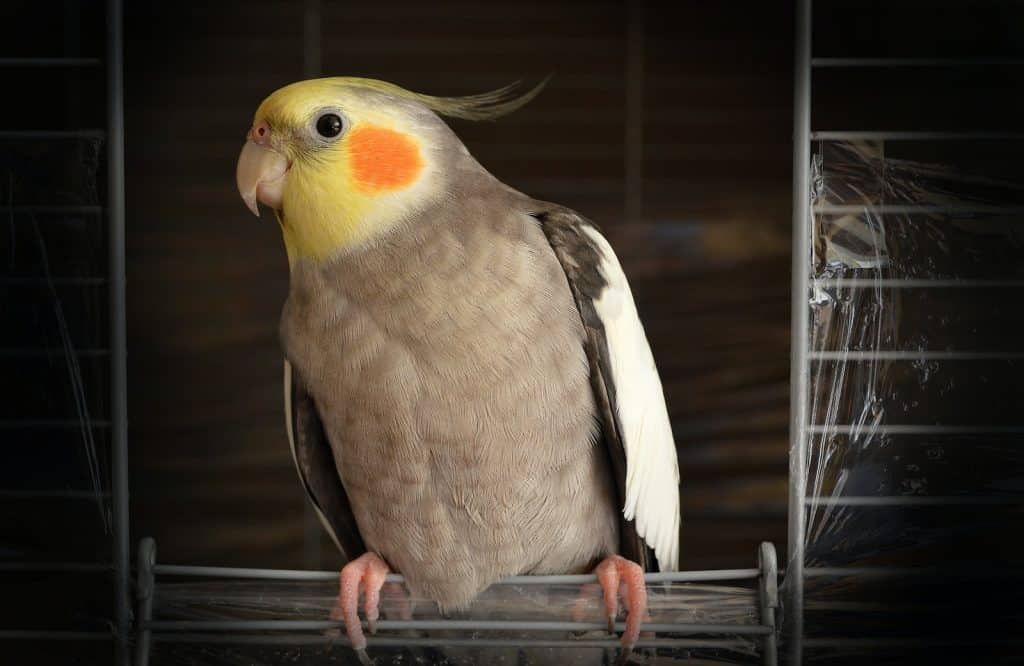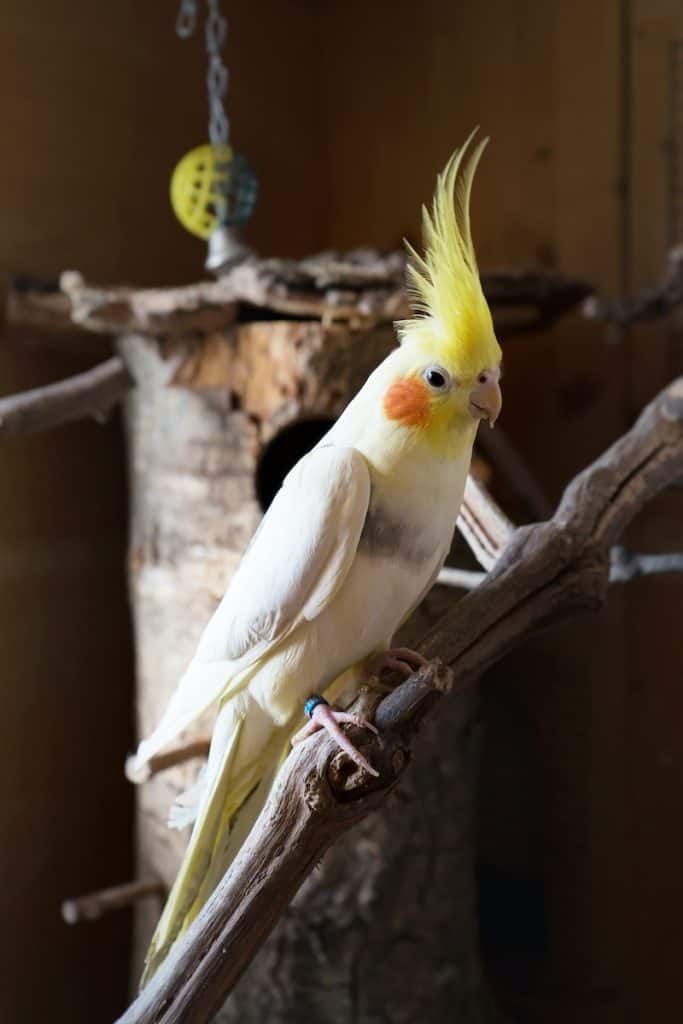When it comes to keeping your cockatiel in the best condition, care doesn’t stop with a good diet and clean cage. Another crucial element of cockatiel care is maintaining the health of their nails. Overgrown nails can cause discomfort and even lead to health issues like joint pain or foot injuries. This is why knowing how to clip a cockatiels nails at home can be an invaluable skill for any bird owner.
Though some pet owners might be hesitant, there’s no need to worry. Clipping a cockatiels nails isn’t as daunting as it might initially seem. With the right tools, informative guides, and a steady hand, you’ll find that it’s a task you can manage on your own. It’s important to remember, however, that if you’re uncomfortable doing it yourself, a visit to an avian vet is always an option.
Many pet cockatiels can have their nails maintained with natural wood perches or concrete perches available at pet stores. These items provide a rough surface that helps wear down the bird’s nails, thus reducing the frequency of manual clippings. But, for some birds, this might not be enough, and that’s when your manual clipping skills will come into play.
Understanding Your Cockatiel’s Nail Health

As a doting cockatiel owner, it’s crucial for you to be in tune with your feathered friend’s nail health. Just as humans care for their nails, a bird’s nails need occasional maintenance. Typically, pet birds like cockatiels have their nails trimmed to mimic the natural wear they’d experience in the wild.
The health of your cockatiel’s nails is tied to their overall comfort and wellness. Overgrown nails can cause your cockatiel’s toes to spread out uncomfortably, and make it harder for them to grasp onto cage bars or perches. Also, overly long nails can get caught in fabrics or rough surfaces causing discomfort and potential injury to your bird.
Wild birds tend to maintain their nails’ length through their daily activities, such as foraging, climbing, and griping onto natural wood perches. The textured surfaces wear down the nails naturally, so they don’t often develop overgrown nails. However, pet cockatiels don’t have access to the same types of natural surfaces in their cages and therefore, need assistance from their owners.
You may observe your pet cockatiel trying to manage their own nails by scraping them on rough surfaces or even biting them. This is a sign that it’s time to help them with a nail trim.
To maintain your cockatiel’s nail health every month, you might want to include textures or items in their cage like concrete perches or rough surfaces for them to grip onto and naturally trim their nails. Such perches replicate the natural surfaces found in the wild, facilitating natural nail wear.
But remember, checking your pet cockatiel’s nails regularly ensures that they don’t get too long, impeding their quality of life. Their nails should curve gently around your index finger, not protruding past it when your bird is perched. It’s also important to take note of the nail’s color. Darker nails are harder to trim as the vein – known as the “quick” – isn’t clearly visible. Light colored nails allow you to see the vein better, reducing the risk of cutting into it during nail trimming.
If you’re unsure about how to clip a cockatiel’s nails yourself, it’s safe to take your bird to an experienced avian vet. On the other hand, if you have experience and are comfortable handling your cockatiel, you can attempt to trim their nails at home. In this case, it’s always good to have a clotting agent, like styptic powder, on hand to stop bleeding in case you accidentally cut into the quick.
In our following sections, we’ll walk you through a step-by-step guide on how to clip your cockatiel’s nails safely at home. Just remember, maintaining your cockatiel’s nail health is a key aspect of good bird ownership. So, whether you’re opting to trim them yourself or entrusting your pet to a vet, a regular nail check-up should be a part of your routine.
Consider your cockatiel’s nail health as an opportunity to bond and build a stronger connection. A little care and attention will go a long way in enhancing the quality of your feathered friend’s life.
Prepping for the Nail Clipping Session: What You’ll Need

Prepping for a nail clipping session begins with gathering the right tools and setting the proper environment for your cockatiel. Your bird’s comfort should always be your top priority when it comes to trimming your pet’s nails. You’ll need human nail clippers or avian-grade scissors to precisely trim your cockatiel’s nails, styptic powder to stop any potential bleeding, and a towel to comfort and control your feathered friend during the process.
- Human Nail Clippers or Avian Scissors: Human nail clippers work well for small birds and cockatiel nails. However, avian-grade scissors available at various pet stores are quite handy if you’re figuring out how to clip a cockatiel’s nails for the first time.
- Styptic Powder: Even the slightest mishap can lead to bleeding during nail trimming. So, it’s beneficial to have styptic powder or, in its absence, corn starch to halt bleeding immediately.
- Towel: Enveloping your bird in a towel can create a more secure environment, making the cockatiel feel safe and controlled during nail clipping.
To prepare your cockatiel for the nail trimming session, it’s crucial to create a calm and serene atmosphere for your bird. Starting with a soothing tone of your voice, speak reassuringly to your pet cockatiel, which works wonders in keeping them relaxed.
For a smooth trimming process, observe the length and color of your bird’s nails closely. If your cockatiel has light-colored nails, it’s easier to spot the blood vessel within (also referred to as the ‘quick’). However, on darker nails, using a backlit light source assists in locating the ‘quick’ to avoid cutting into it, which might cause discomfort and bleeding.
On the flip side, overgrown nails may have a longer ‘quick,’ making nail cutting a tad tricky for cockatiel owners. For such cases, gently taking off tiny amounts at a time helps you trim without causing harm.
Lastly, always remember that maintaining a comfortable and warm rapport with your feathered friend makes the process less stressful. Nail trimming is a routine part of cockatiel ownership that will become trouble-free once both you and your pet adjust to the process.
Identifying When to Trim Your Cockatiel’s Nails

Keeping track of your cockatiel’s nails is a crucial aspect of responsible pet bird care. Trimmed nails are essential for any good bird owner, helping your cockatiel comfortably grip perches and ensuring your feathered friend’s general well-being.
Your first indicator to trim your cockatiel’s nails will be their length and shape. Overgrown nails can curl back towards your bird’s toes, leading to discomfort and potential injury. If you notice scratches on your skin from handling your pet or see them getting their nails snagged on cage bars or toys, it’s an indicator you should reach for your bird-friendly nail clippers.
Keeping your bird’s nails trimmed also discourages destructive behaviors, such as scraping or picking at cage bars – a common habit among pet cockatiels. It’s best to keep an observant eye on these behaviors to ensure your pet bird’s comfort and safety.
Color and texture can also tell you a lot about your bird’s nails. Light-colored nails in cockatiels are healthy, but darker nails could indicate a problem, needing an examination by an avian vet. Similarly, the texture of your bird’s nails should generally be smooth. Rough surfaces or irregularities might be a sign of poor nutrition or health.
Lastly, consider the condition of your bird’s perches. Natural wood and concrete perches with a rough texture can help keep nails short just as wild birds use tree branches for the same purpose. If your cockatiel’s nails are overgrown, these perches might not be doing their job correctly.
Here are some quick guidelines for determining when it’s time to trim:
- Long nails: Nails that extend beyond the tip of the toe
- Curved nails: Nails curling back towards the cockatiel’s foot
- Darker nails: Nails appearing dark or discolored
- Rough nails: Nails with an abnormal texture
Maintaining a good relationship with your feathered friend entails being caring and alert about their wellbeing. Regularly checking your cockatiel’s nails and knowing the warning signs can make all the difference. Remember, your vet is your best resource for information related to cockatiel ownership, especially if you’re uncertain about anything.
Caring properly for your cockatiel’s nails not only maximizes their comfort but also solidifies your bond with your pet. With this knowledge, you can confidently ensure your bird’s health and happiness.
Step-by-Step Process to Clip Cockatiel Nails Safely
Clipping your cockatiel’s nails may seem daunting, but it’s a necessary part of owning these pet birds. Let’s help you out with a fool-proof step-by-step guide that will ensure your cockatiel nails are trimmed to the perfect length.
- Gather your supplies.

Before you sit down with your cockatiel, make sure you have everything you need at hand. Your supplies must include a pair of human nail clippers available at pet stores, a towel to gently wrap your bird, and styptic powder like Kwik Stop or corn starch to stop bleeding if you accidentally cut into the bird’s blood vessel.
- Position the bird correctly.
Birds have a natural instinct to escape captivity. To calm your bird, wrap it in a towel, leaving its head and feet exposed. Gently grab a foot, making sure you spread out the cockatiel’s foot with your index finger to see each nail properly.
- Spot the blood vein.
Orientation and good light are key for this step. Cockatiel nails are like ours. Each one has its own blood vessel, and it’s important not to cut into it. In birds with light-colored nails, the blood vessel is visible as a dark line running through the nail. Black or darker nails are trickier, as you may struggle to see the blood vessel. In this case, use a torch or bright light source to shine through the nail from below and reveal where the vein is.
- Do the nail trimming.
With a calm and steady hand, clip each nail at a 45-degree angle. Start conservatively. It’s better to clip a smaller amount off and repeat if necessary, rather than risk cutting into the blood vein. If your cockatiel’s nails are overgrown, you’ll have to gradually trim them back over several weeks. Overcutting can result not only in bleeding but in deformity and joint pain.
- Clotting is crucial.
In case you nicked the blood vein, be ready to quickly apply a clotting agent like the styptic powder. It aids in clotting by contracting the blood vessels, hence stop bleeding fast. If bleeding continues even after application, consult an avian vet immediately.
Ignoring overgrown nails can result in deformities, infection, and pain in cockatiels feet. Regular monitoring and timely action can prevent discomfort to your feathered friends. Besides, providing a variety of natural wood perches and rough surfaces like concrete perches in bird’s cage can wear down the cockatiel’s nails naturally similar to what happens in wild birds.
It may seem scary at first, but nail clipping is an essential part of maintaining a healthy cockatiel. As with all things, practice makes perfect. And remember, it’s perfectly okay if you prefer to let an avian vet do the nail trims if you’re unsure. You’re doing a great job keeping your cockatiel happy and healthy!
Final Thoughts: How to Clip a Cockatiels Nails
Cockatiel nail care is an essential aspect of cockatiel ownership. Maintaining your cockatiel’s nails helps ensure their comfort, reduces the risk of injury, and contributes positively to their overall health. Though nail trimming may seem challenging initially, with the right tools, guidance and a calm approach, it can be accomplished at home. Providing your bird with natural wood or concrete perches also helps naturally wear down the nails, reducing the frequency of manual trims. As with any aspect of pet care, when in doubt, consult an avian vet. Remember, consistent care and attention to your feathered friend’s nails can significantly enhance their quality of life.
Other suggested articles:




